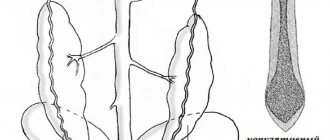This question worries many who have decided to have an animal at home, but simply answering it is not so easy.
To determine the sex of a red-eared slider, you need to wait until it reaches a certain age, when a number of signs begin to indicate its gender. Having reached the age of 6-8 years, the red-eared slider is ready to breed. It is during this period that it is easiest to determine their sex, but already at 1.5-2 years, after analyzing all the combined characteristics, you can try to determine the sex of the red-eared slider. In order to determine gender, you should pay attention to the following features that can distinguish a boy turtle from a girl turtle.
Claw length
Male red-eared sliders have longer claws on their front feet than females. The male needs this in order to hold onto the female’s shell more firmly at the time of fertilization. Females have slightly shorter claws, but they are more blunt.
This method is quite simple, but can be misleading in the process of keeping them in captivity. Spending a lot of time on the island, the turtle can wear its claws. Here everything will depend on what material the sushi element is made of.
Biological features
Red-eared turtles live shorter than land turtles. However, they can still delight their owners with their presence for quite a long time. At home, their lifespan is approximately 20-25 years. Accordingly, puberty in these reptiles occurs quite late.
Male rubies can begin to pay attention to females as early as about one year of age. But puberty in boy turtles usually occurs only at 3-5 years. Females mature even later. Girl turtles mature at approximately 5-7 years of age.
Thus, those who are interested in how to determine the sex of red-eared turtles should wait for their pet to reach this age. It will be possible to say with certainty who lives in a home aquarium only when the length of the reptile’s shell reaches approximately 7-10 cm.
Features of the shell
By carefully studying the structure of the shell of a red-eared turtle, you can just as easily determine the gender of your pet. In order to facilitate the mating process, males have a shell with a concave abdominal part. Females do not have this feature.
If you look closely at the shape of the shell, it is different: males have a more elongated and elongated shape. In the area of the tail, the shape of the shell of males is similar to the Latin letter V, while in females it is more rounded. In the tail area, the female has a large hole, which facilitates normal egg laying.
How to determine the sex of a red-eared turtle
How to determine the gender of a puppy: boy or girl
As is known, in freshwater turtles the sex is formed during the formation period in the egg. There are also several species of reptiles in which sex is associated with incubation temperature. Often, the sex of reptiles is determined at the moment when turtles receive secondary sexual characteristics.
Red-eared turtles mating
In order to easily determine the sex of a reptile, you need to wait until the animal reaches a certain age and signs indicating the pet’s gender appear. People purchase both young and older turtles. Each age has certain characteristics of the body structure, which may indicate one or another gender.
The freshwater turtle can breed after reaching 6-8 years of age. This is due to the fact that during this period it is easiest to recognize what gender an individual is. However, you don't have to wait that many years. The process can be accelerated if you pay attention to a number of features that will appear already in 1-2 years.
There are three main ways to understand the sex of an aquatic turtle:
- by external signs;
- by behavior;
- thanks to medical research.
Claw length
By the length of the claws, as a rule, you can determine the sex of an individual. Male red-eared turtles have longer claws on their front feet than females. This is necessary so that during the mating period you can stay on the female’s shell. Females, in turn, have short claws, which are more blunt.
Red-eared turtle claws
Determining the gender of a red-eared turtle by the length of its claws is the easiest way. However, there is one caveat - a turtle can wear off its claws by spending time on land in a terrarium, so this method does not provide an exact guarantee.
Turtles have scales on their feet. Male individuals have enlarged scales on the inside of their hind legs.
Carapace
The gender of a reptile can be determined by looking closely at its shell. There are several features in total. It is quite easy to distinguish a male from a female. Boys, as a rule, have a shell with a concave abdominal part, which facilitates the fertilization process. Females do not have this feature.
Red-eared turtle shell
In addition, the shape of the shell of females and males is different: the female individual has a shell with a more round outline closer to the tail. In boys, the shape of the shell resembles the letter V.
For your information! In the area of the tail of a female individual, you can see a small hole, which is necessary for laying eggs.
Sometimes the color of the shell helps determine the sex of an individual. In males, the shell, as a rule, has a bluish color. If the animal has a different shell color, it is most likely a female.
Tail and cloaca
Female red-eared turtles have a narrow and meek tail due to the fact that the reproductive organs are located in this area. The genital organ of males is hidden in the tail, which explains its large width and length.
Tail and cloaca of a red-eared turtle
Gender is also determined by the location and shape of the cloaca. Females have a cloaca located closer to the shell. The shape of the cloaca resembles the shape of a star. In males it is located further from the shell and is shaped like a straight line.
Muzzle dimensions
When answering the question of how to find out the gender of a red-eared turtle, you can also use a method such as comparing the size of the muzzle. If two individuals are approximately the same age, then the sex of the animal can be determined by the size of the body.
Females, as a rule, are larger in size, which is explained by the need to bear offspring. They also have a muzzle with more round outlines, while males, on the contrary, have a more elongated shape. The head of a male turtle is large in size and has a longitudinal red stripe, which changes color saturation during mating - it becomes brighter.
Muzzle of a red-eared turtle
Additional signs
If it is not possible to determine the sex of the animal, then you can turn your attention to additional signs that may help cope with the task.
The female has a round nose with a characteristic yellow color. The male has a sharper nose, characterized by its small size. Also, males have pronounced spurs on their paws. The upper jaw of the male has a whitish tone.
In addition, males have a protruding penis. It can be noticed when the animal defecates or during manipulations in the rear part of the body. Outwardly, it looks like a rose, and if you touch it, it will hide in its shell.
Other signs of red-eared turtles
If there are turtles of the same age, you can try to determine their sex by their overall dimensions. Females are slightly larger than males because they will have to carry and then lay eggs.
Some experts point out that the male's muzzle has a more elongated shape than the female's muzzle. The female's muzzle has a more round outline. The paws of males have more pronounced spurs, which indicates that they are stronger than the paws of females.
Reptile behavior
Thus, it will be relatively easy to distinguish an adult male from a female by external signs. But how can you determine the sex of a red-eared slider based on its behavior? In this case, you should focus primarily on the degree of aggressiveness of the pet.
Boy turtles are usually much more active and mobile than girls. For example, when trying to pull an adult male out of an aquarium, he will most likely try to reach his owner’s hand with his beak and bite. In any case, the boy will be very active in breaking free and trying to escape.
A female turtle, pulled out of an aquarium, will most likely pull its head into its shell and simply hang in the owner’s hand, waiting to be released back. Female red eared birds are usually not particularly active, much less aggressive.
Features of behavior
It is especially possible to determine the sex of red-eared turtles during the mating season. Behavioral characteristics indicate that each pet belongs to one gender or the other. During the mating season, the activity of males increases sharply. They organize all sorts of demonstrations to demonstrate their capabilities. At the same time, they actively swing their front legs, with much larger claws than the females have. During this period, they constantly chase females and make attractive head movements.
If someone is seriously involved in breeding red-eared turtles, then this article will be very useful, since at an early stage, before they are ready to reproduce, turtle pairs can be formed. In addition, such knowledge will help to correctly and accurately name pets, which is very important for many owners.
In pursuit of something unusual, it has recently become fashionable to keep exotic animals such as snakes, boa constrictors, chameleons, etc. at home. This list also includes many species of turtles, including the red-eared slider. All of them are representatives of the tropics and require special attention and special conditions of detention. It is very important that all those who want to have a red-eared turtle at home understand that it also needs certain conditions, without which it simply cannot live. In addition, this is a very expensive business, since the turtle’s diet must be varied, otherwise it will not be able to develop normally due to lack of nutrients.
Features and methods of determination
Difficulties in determining it are explained by the fact that a turtle is a reptile without clearly defined features that determine whether it belongs to a male or female organism. Sexual maturity is achieved faster in captivity, so it is possible to determine who the individual is after reaching 2-5 years, when the shell grows to 10 cm. In the wild, this is possible after 6-8 years.
There are alternative verification methods that are not widely used:
- ultrasonography;
- blood test for hormones;
- radiography.
Ultrasound is applicable to adult turtles when the specialist is able to distinguish the ovaries from the testes. Blood testing is relevant in relation to sexually mature individuals, taking into account testosterone fluctuations during the mating season. Radiation diagnostics allows you to check the presence of individual parts of the hemipenis.
All small reptiles look like females before puberty. In adult turtles, differences can be distinguished in the skin, claws, head size, shell shape and other parts of the body.
Difference in behavior
Observing its behavior will help to definitively determine the sex of a turtle, but there should be several individuals. Males are more aggressive and flirt with females. They sniff their tail and paws, poke their nose into their muzzle, and shake their heads. On land, males run after females, and in water they sit on top of their shell, clasp the carapace with their hind legs and knock on the “lady’s” head with their nose. Males also fight with each other, clashing their shells violently. These are the ways you can find out the gender of your pet(s).
Additional signs
If the basic methods did not help determine the sex of red-eared turtles, then there are additional signs with which you can independently determine the gender of the reptile. These include the following:
- comparison of freshwater body size;
- examination of the posterior part of the plastron in males and females;
- comparison of anal openings.
Sex can most likely be determined by comparing the body sizes of individuals. Typically, females have a large body size; this quality is inherent in nature. The large body size ensures the successful process of gestation of eggs, from which future offspring subsequently hatch.
The back of the plastron will help you find out whether the bird in front of you is a female or a male. In males it is of a certain type, it usually has a sharp end and looks like the Latin letter “V”. In the female, this part has no pronounced differences; it ends in roundness.
And the last way to determine gender is the type and location of the anus. In females it is usually located at the very base of the tail and has the appearance of an asterisk. In males it is located closer to the end of the tail and looks like an oblong line.











